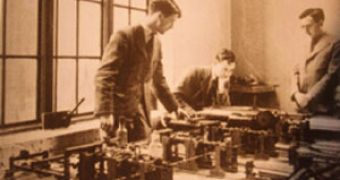While the first digital computer was constructed in the late 40s, an even earlier computing platform was available: the analogue computer. They were used for almost three decades to perform difficult mathematical calculations like creating artillery-firing tables for example. Now, only a complete and original one from these analogue computers remains and this Differential Analyser is famous for a number of reasons. This very computer was used to help design the "bouncing bombs" that were later employed in the "Dam Buster" attack on German hydro electric dams, during the World War 2.
Later, the machine was bought for 100 pounds and was shipped to New Zeeland in the mid 50s. Ironically, there it was used to build the Benmore Hydro Dam and by the Department of Scientific and Industrial Research, to calculate the increase of rabbit populations. Being an old and obsolete machine it stood idle for more than two decades until finding its way to the "Museum of Transport and Technology" in the 1970s, where it has been restored and is on display as a lead exhibit in the museum's "Machines that Count" exhibition.
The Differential Analyzer was built by a team led by J.B. Bratt from the Cambridge University in 1935 and because its main components came from Meccano, it was know as Meccano Differential Analyser No. 2. Covering a space of three or four square meters, the machine is a very complex arrangement of cogs, strings and chains, all used to drive a plotter.
According to William Irwin, the Differential Analyser qualifies as a computer because it is programmable. Irwin wrote about the analogue family of calculators and was cited by Computerworld: "These devices usually perform one function only. When an analogue device can be 'programmed' in some way to perform different functions at different times, it can be called an analogue computer. The Differential Analyser is such a computer as it can be set up in different configurations, i.e. 'programmed', to suit a particular problem."

 14 DAY TRIAL //
14 DAY TRIAL //